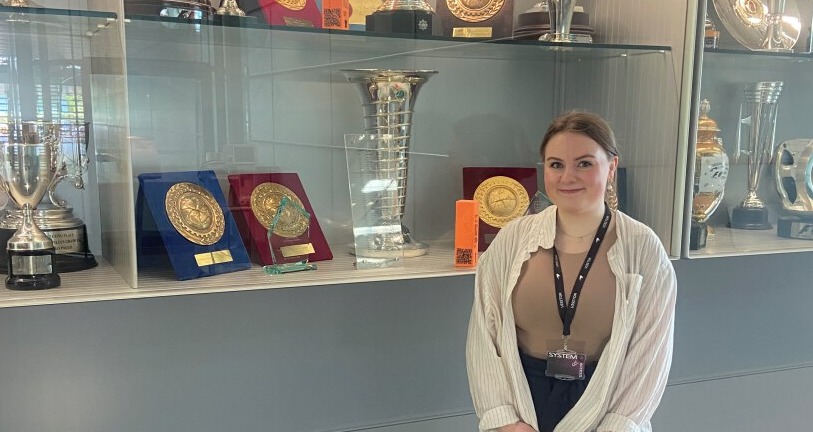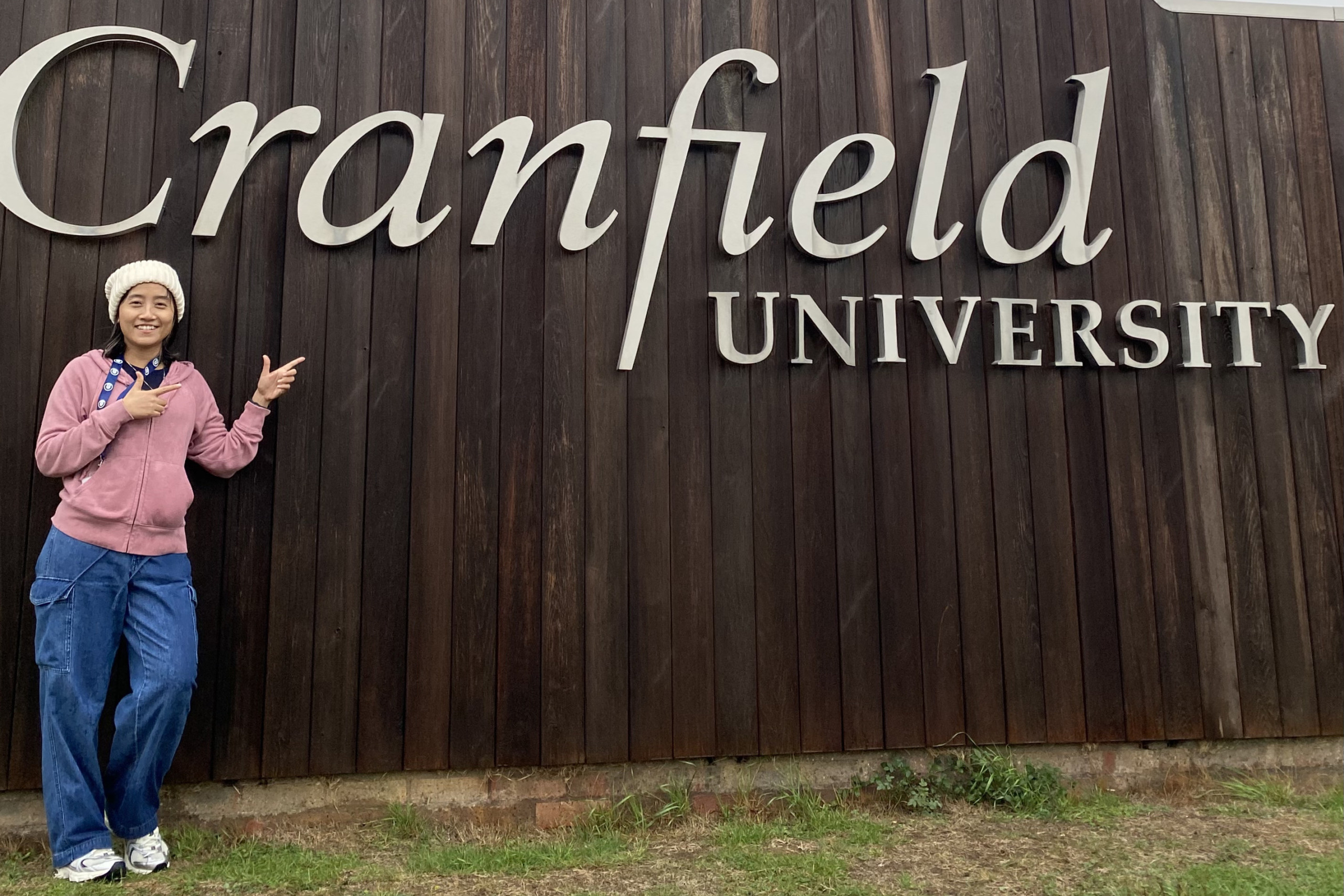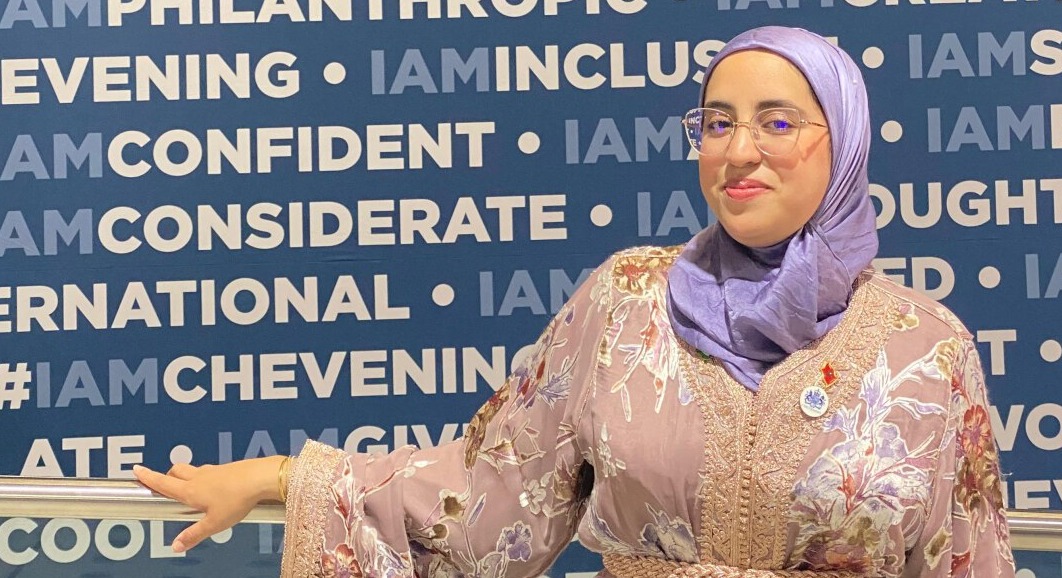Research fellow Teegan discusses her robot experiment at Cranfield
18/04/2019

Teegan Johnson, Research Fellow in Industrial Psychology and Human Factors discusses her robot experiment at Cranfield University.
How did you get into being a Research Fellow at Cranfield University?
I always knew that I wanted to do psychology and I knew I wanted to do applied psychology, I did a masters in applied psychology and then thought I would end up in occupational psychology, which is very business based but then this job came up and they wanted me for it, so I took the opportunity and here I am. I am glad I took the opportunity as the work is so varied and interesting, I’m not sure anywhere else is doing anything quite like it.
Tell us about the experiment you’re doing at the moment and how you gather your research?
The point of this experiment is to understand how people interact with collaborative robots, the design of them is fairy new, particularly with the robots that can pick up the heavier load. The collaborative robots we had were for smaller weights, they could only pick up 7kg but now we have the 35kg and 100kg ones, they can actually go into a factory and be of use to someone. Now that we can do this, we’ve got to understand how people interact with the robots and how they feel about it. We are looking to develop a rule regarding trust and speed. So, the experiment tests how a person’s trust in the collaborative robot may change depending on the speed that the robot moves. It’s an experimental methodology as speed is the only thing that is being changed. I am gathering research getting participants to come in and interact with the robot at different speeds followed by attaching a fitting to the end of the pipe.
How long does it take to gather enough research?
As many as we possibly can, but for this experiment, it’s a feasibility study so we’ve got to keep it quite small but we need enough so that we can write about it and know that we have a good, reliable and valid tool. We are aiming for 25 participants, hopefully by the end of data collection, so fingers crossed.
What’s next for the research?
Once we establish a rule, we hand it off to the engineers at the Advanced Manufacturing Research Centre and they are going to look at integrating the rule into CAD (computer-aided design) and they will do some of the programming. At the same time, they’re looking to design a robot cell that will look to fit slat onto an airplane wing, we are looking to have the robot place them so that an operator can go underneath and attach it to the wing, whereas at the moment it’s a two-person job to get the slats in the right place with the right orientation. If we can get a robot doing the job, it means you’ve not got 2 people lifting, carrying and holding in place. So, fingers crossed we can reduce musculoskeletal risk. We will then validate the rule with the robot running at the best speed for trust in our lab with volunteer participants and identify whether the trust score is comparable.
Categories & Tags:
Leave a comment on this post:
You might also like…
Screening for FTSE 100 companies on Bloomberg
So you’re researching an index and need some data on its constituent companies? Bloomberg’s Equity Screening tool makes light work of this, not just for the FTSE, but for indices, exchanges and sectors worldwide. Type EQS ...
Accelerating my future: How Cranfield put me on the fast track to automotive safety innovation
Hello! I’m Michaela Kaiser, and I’m thrilled to share my journey studying abroad. I’m from Calgary, Canada, and I recently graduated from Cranfield’s MSc Automotive Engineering course. My path to Cranfield ...
From Myanmar to Cranfield: My path to Renewable Energy
As someone who is passionate about sustainability, my career goal is to build a path in the renewable energy sector. My aspirations comes from the benefits of developing sustainable energy sources and ensuring energy ...
From lifelong dream to circular economy leader: Q&A with Himesha Randeni on the Environmental Management for Business MSc
What does it take to turn a lifelong passion for the planet into a fulfilling and impactful career? For Himesha Randeni, the answer was the Environmental Management for Business MSc at ...
Library services over the Christmas period
Kings Norton Library will be open 24/7 throughout the holiday period as a study space. Library staff will work until 6pm on Friday 19 December and will resume their normal working hours from 9am on ...
From the control tower to Cranfield: My journey to shaping the future of airports
Hi, I’m Karima Lakouz, and this is the new me! I’m a Moroccan full-time student, aiming to graduate in 2026 with an MSc in Airport Planning and Management from Cranfield University. ...






